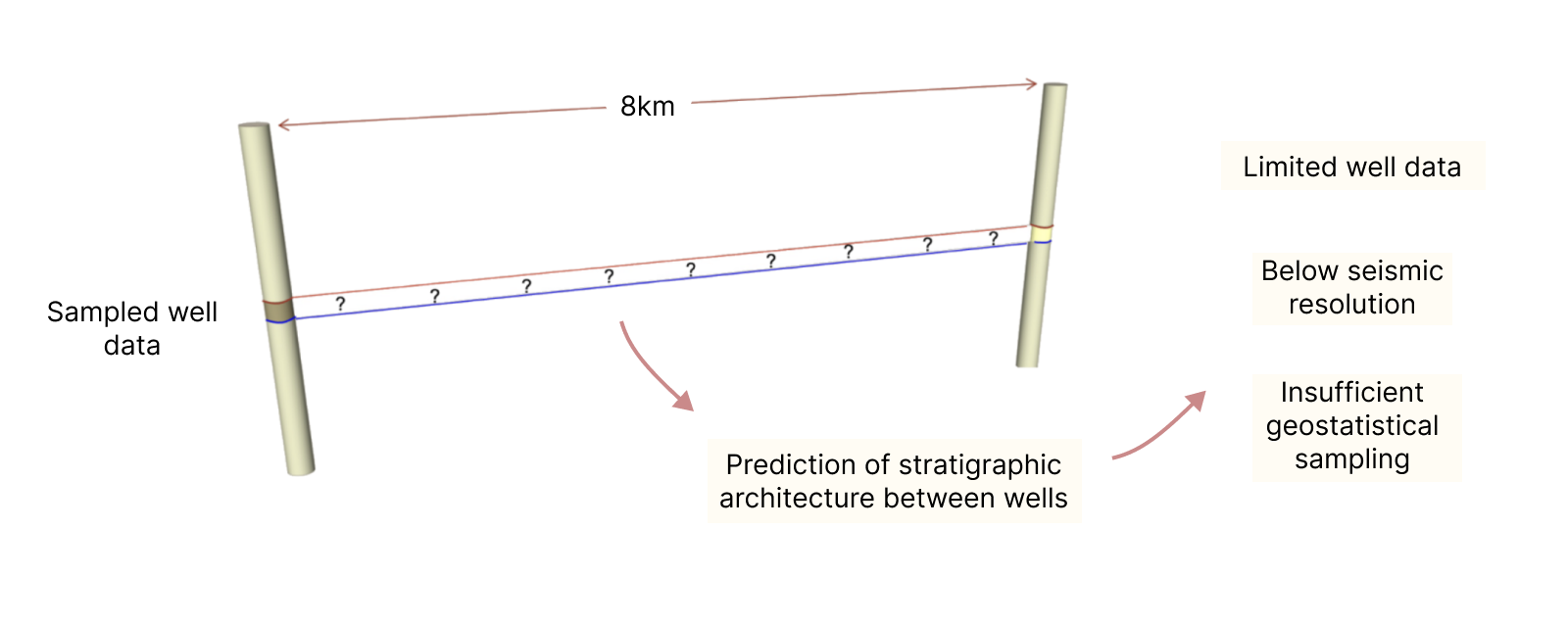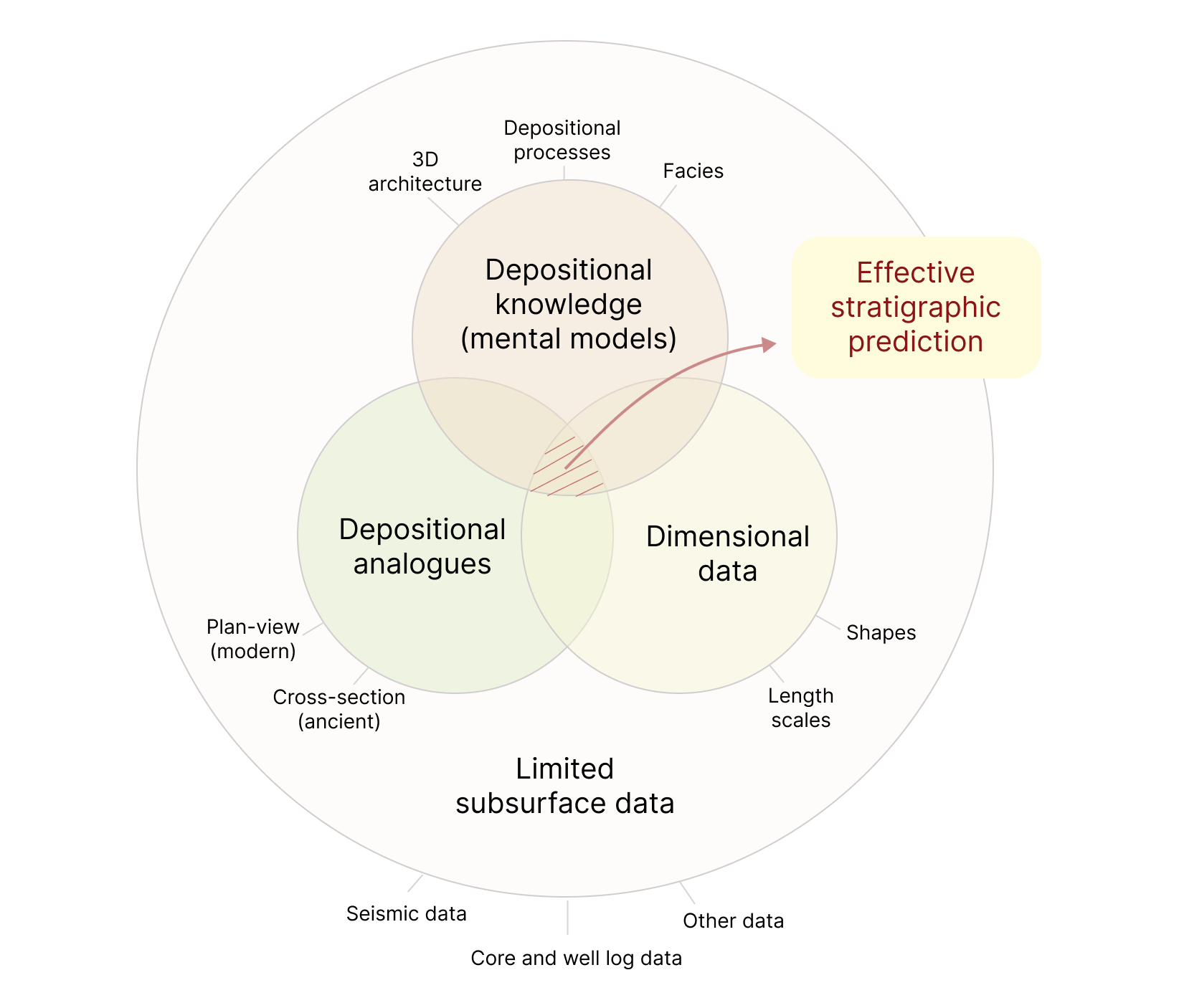Stratigraphic prediction based on limited subsurface data
Sedbase was developed to help you make geologically sound decisions about depositional architecture when working with limited subsurface data.
The limited subsurface data problem
Predicting fluid flow in the subsurface relies on accurate estimates of the distribution of rock properties.
This task is challenging because:
-
Wells sample only a tiny fraction of the full 3D volume on of an interval.
-
Flow units and important heterogeneities often fall below seismic resolution.
-
Facies sample density from wells is often insufficient for robust geostatistical modeling
-
Inter-well areas may contain unexpected rock properties, including such as low-permeability barriers and baffles, that may not have been sampled by available data

Rather than relying solely on geostatistical methods to assign properties between wells, addressing these challenges often requires geoscience-driven solutions grounded in a sound understanding of the underlying depositional environments.

A required geological solution
One of the most effective strategies for stratigraphic prediction in data-limited settings is to relate rock properties to the environments in which they were deposited.
This process involves interpreting depositional environments from available data and predicting stratigraphy in inter-well areas through a combination of data analysis, application of depositional models, use of analogues, and calibration with dimensional and geometric constraints.

Working with sparse data means identifying valid depositional scenarios that not only honor well control, but also provide geologically reasonable predictions in the inter-well areas.
To effectively address subsurface predictions in data-limited settings, it is essential to:
Great economic impact
It is important to note that environmental prediction for areas between wells is not a trivial task and should be guided by appropriate depositional concepts, suitable analogues, and well-reasoned assumptions about the likely spatial dimensions of the identified units.
Sedbase offers a range of tools and databases to help you making such geology-driven decisions.